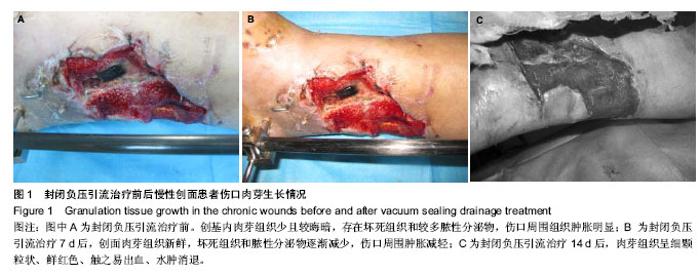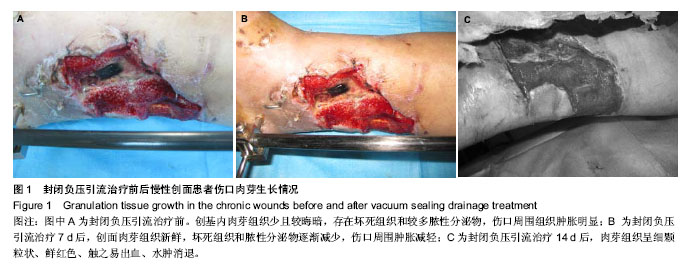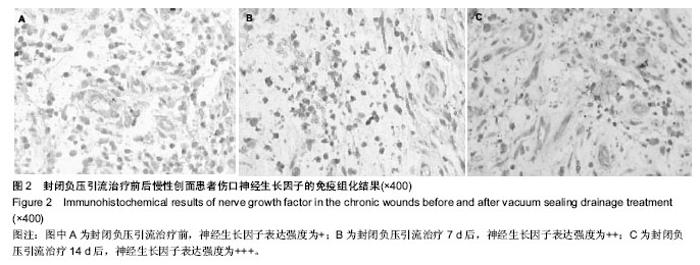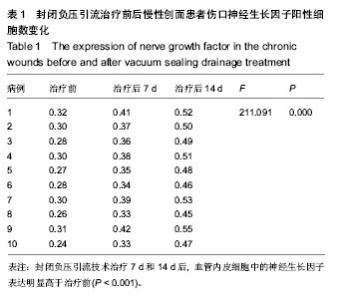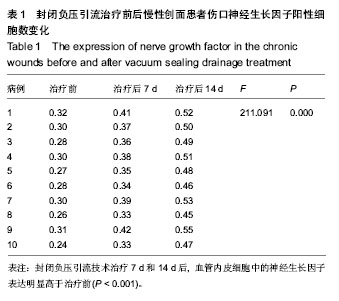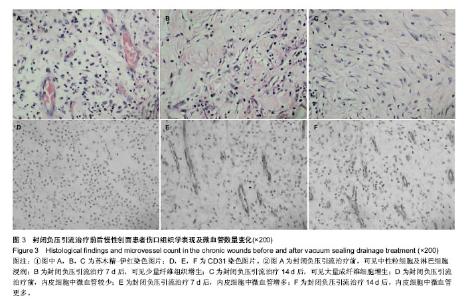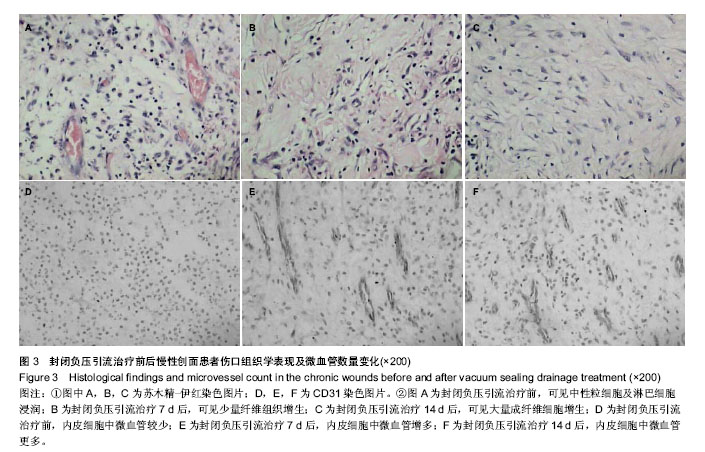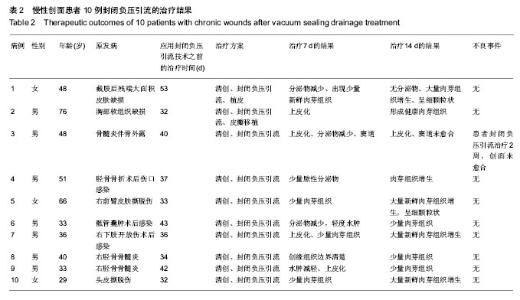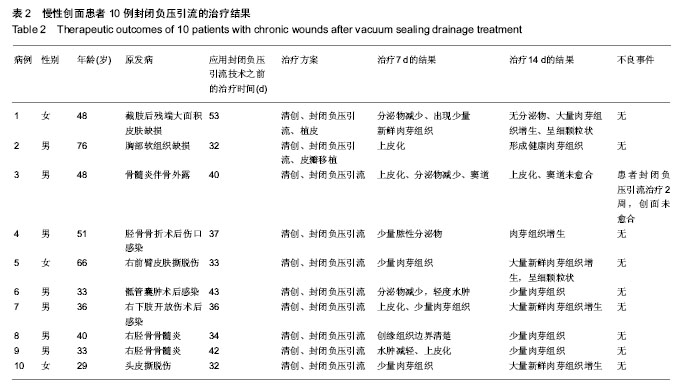| [1] Fleischmann W, Strecker W, Bombelli M. Vacuum sealing as treatment of soft damage in open fraktures.Unfallchirurg. 1993; 96:488-92.[2] 祁光裕,马中,宁莫凡,等.负压治疗对犬缺血肢体自由基损伤保护的实验研究[J].西安交通大学学报,2004,25(5):466-467, 477.[3] 李金清,陈绍宗,李学拥,等.封闭负压引流技术对加速慢性创面愈合的机制[J].中国临床康复,2003,6(4):520-521.[4] 刘兴邦,余国荣,陶祥,等.封闭负压引流对肉芽成纤维细胞生物学行为的影响[J].中华实验外科杂志,2010,27(11):1599-1601.[5] Baldwin C, Potter M, Clayton E, et al. Topical negative pressure stimulates endothelial migration and proliferation: a suggested mechanism for improved integration of Integra. Ann Plast Surg. 2009;62(1):92-96.[6] 傅小兵,王德文.创伤修复基础[M].北京:北京人民出版社,1997: 155-165.[7] 杨帆,胡耑,白祥军,等.负压封闭引流对兔创面氧分压及愈合的影响[J].中国急诊医学杂志,2011,20(9):940-944.[8] Wu L, Brucker M, Gruskin E, et al. Differential effects of platelet-derived Growth factor BB in accelerating wound healing in aged versus young animals: The impact of tissue hypoxia. Plast Reconstr Surg.1997;99(3):815-823.[9] 许龙顺,陈绍宗,乔骋.负压对创面血流量的影响[J].第四军医大学报,2000,21(8):976-978.[10] 李靖,陈绍宗,李学拥.封闭负压引流术对创面微循环流速和血管口径影响的实验研究[J].现代康复,2000,4(12):1848-1849.[11] Li RG,Yu B,Wang G,et al. Sequential therpy of vacuum sealing Drainage and free-flap transplantation for childen with extensive soft-tissue Defects below the knee in the extremities. Injury. 2012;46:822-888.[12] Lazarovici P, Marcinkiewicz C, Lelkes PI. Cross talk between the cardiovascular and Nervous systems: neurotrophic effects of vascular endothelial growth factor (VEGF) and angiogenic effects of Nerve growth factor (NGF)- implications in drug development. Curt Pharm Des. 2006;12(21):2609-2622.[13] 陈长青,郭林新,林山,等.封闭负压引流在四肢创伤性软组织缺损中的应用[J].临床骨科杂志,2009,12(4):440-442. [14] Palolahti M, Lauharanta J, Stephens RW,et al. Proteolytic activity in leg ulcer exudate. Exp Dermatol.1993;2(1): 29-37.[15] 蒋琪霞.阑尾切口感染伴肠瘘复杂伤口的处理[J].医学研究生学报,2006,19(4): 383-384.[16] 汤苏阳,李春伶,董继红.封闭负压引流对刨伤愈合中周同神经未梢分泌的P物质及表皮生长因了表达的影响[J].中国临床康复, 2004,8(32):7171-7173.[17] Squier CA. The effect of stretching on formation of yofibroblasts in mouse skin.Cell Tissue Res. 1981;220(2): 325-335.[18] Baldwin C, Potter M, Clayton E, et al. Topical negative pressure stimulates endothelial migration and proliferation: a suggested mechanism for improved integration of Integra. Ann Plast Surg. 2009; 62(1):92-96. [19] Takei T, Mills I, Arai K, et al. Molecular basis for tissue expansion: clinical implications for the surgeon. Plast Reconstr Surg.1998;102:247-258.[20] Kasai Y, Nemoto H, Kimura N, et al. Application of low-ressure wound therapy to ischaemic wounds. Plast Reconstr Aesthet Surg. 2012;65(3):395-398.[21] Emanueli C, Salis MB, Pinna A, et al. Nerve growth Factor promotes angiogenesis and arteriogenesis in ischemic hindlimbs. Circulation. 2002;106:2257-2262.[22] Hur J, Yoon CH, Lee CS, et al. Akt is a key modulator of endothelial progenitor cell trafficking in ischemic muscle. Stem Cells. 2007;25:1769-1778.[23] 方勇,陈玉林,胡云凤,等.烧伤创面羟脯酸含量动态变化的实验研究[J].中华整形烧伤外科杂志,1996,12(1):48.[24] 汤苏阳,陈绍宗,曹大勇,等.神经生长因子对人血管内皮细胞增殖作用的研究[J].中国美容医学,2003,12(4):353-354.[25] 陈绍宗,李金清,李跃军.封闭负压引流技术减少爆炸伤创面坏死及促进愈合的实验研究[J].中华创伤杂志,2007,23(7):542.[26] Azarovici P, Marcinkiewicz C, Lelkes I. Cross talk between the cardiovascular and Nervous systems: neurotrophic effects of vascular endothelial growth factor(VEGF) and angiogenic effects of Nerve growth factor(NGF)- implications in drug development. Curt Pharm Des. 2006; 12: 2609-2622.[27] 汤苏阳,陈绍宗,胡昭华,等.封闭负压引流技术对失感觉神经支配创伤愈合中Bcl-2与NGF/NGFmRNA表达的影响[J].中华整形外科杂志,2004,20(2):139-142. |
